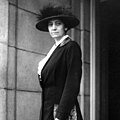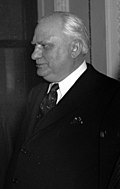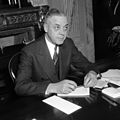List of members representing the district
1818–1833: one seat
From statehood to 1833, Illinois had only one congressional district, and therefore it was at-large.
| Representative | Party | Years | Cong ress | Electoral history |
|---|---|---|---|---|
 John McLean (Shawneetown) | Democratic-Republican | December 3, 1818 – March 3, 1819 | 15th | Elected in 1818. Lost re-election. |
 Daniel P. Cook (Edwardsville) | Democratic-Republican [a] | March 4, 1819 – March 3, 1825 | 16th 17th 18th 19th | Elected August 2, 1819. Re-elected August 7, 1820. Re-elected August 5, 1822. Re-elected August 2, 1824. Lost re-election. |
| Anti-Jacksonian | March 4, 1825 – March 3, 1827 | |||
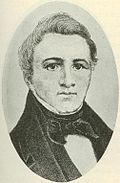 Joseph Duncan (Jacksonville) | Jacksonian | March 4, 1827 – March 3, 1833 | 20th 21st 22nd | Elected August 7, 1826. Re-elected August 4, 1828. Re-elected August 1, 1831. Moved to 3rd district . |
| District inactive March 3, 1833 | ||||
1863–1873: one seat
From 1863 to 1873 there was one at-large seat in addition to the districted seats.
| Representative | Party | Years | Cong ress | Electoral history |
|---|---|---|---|---|
 James C. Allen (Palestine) | Democratic | March 4, 1863 – March 3, 1865 | 38th | Elected in 1862. Lost re-election. |
 Samuel W. Moulton (Shelbyville) | Republican | March 4, 1865 – March 3, 1867 | 39th | Elected in 1864. Retired. |
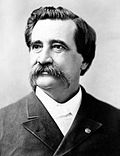 John A. Logan (Carbondale) | Republican | March 4, 1867 – March 3, 1871 | 40th 41st | Elected in 1866. Re-elected in 1868. Re-elected in 1870, but resigned to become U.S. Senator. |
| Vacant | March 4, 1871 – November 7, 1871 | 42nd | ||
 John L. Beveridge (Evanston) | Republican | November 7, 1871 – January 4, 1873 | Elected to finish Logan's term. Resigned to become Lieutenant Governor. | |
| Vacant | January 4, 1873 – March 3, 1873 | |||
1893–1895: two seats
From 1893 to 1895, there were two at-large seats in addition to the districted seats.
| Years | Cong ress | Seat A | Seat B | ||||||
|---|---|---|---|---|---|---|---|---|---|
| Representative | Party | Electoral history | Representative | Party | Electoral history | ||||
| March 4, 1893 – January 12, 1895 | 53rd |  John C. Black (Chicago) | Democratic | Elected in 1892. Resigned to become U.S. Attorney. |  Andrew J. Hunter (Paris) | Democratic | Elected in 1892. Lost re-election in the 19th district . | ||
| January 12, 1895 – March 3, 1895 | Vacant | ||||||||
1913–1949: two seats, then one
Two at-large seats were re-established March 4, 1913. From that date to January 3, 1943, there were two at-large seats, which was reduced to one seat from 1943 to 1949. Representation by districts also continued during this period. The at-large seat was abolished effective January 3, 1949.








